Optics 1: lenses and ocular devices
What is Optics?
Optics is a branch of Physics – it’s the science that deals with light. Optics explains how light energy behaves and interacts with matter. Some of the earliest recorded experiments in optics were done by ancient Egyptians, Mesopotamians, and Greeks using glass lenses and reflective materials like obsidian.
During the Middle Ages and Enlightenment periods, the significant work of scientists Ibn al-Haythem (Book of Optics c1011) and Sir Isaac Newton (Opticks, 1704) made contributions to the field of optics with their observations of the visible spectrum and how light moves through different substances, as mentioned in Chapter 1.1 History of colour theories.
Other significant developments, such as Galileo’s refracting telescope (c.1609), also had a great impact on the fields of optics and astronomy. Since that time, many technological developments have expanded the field of optics to include both the visible and non-visible spectrum.
Lenses
A lens is an optical device usually made from transparent polished glass or plastic that focuses or disperses light depending on its shape. Light passing through the material of the lens is bent – that is, it changes direction depending on the shape and thickness of the lens. The word lens comes from the Latin for lentil because the biconvex (curving outwards on both sides) shape of a lens looks a lot like a lentil. However, not all lenses are biconvex, some are biconcave (curving inwards on both sides) or combinations of convex and concave. Biconvex lenses focus light, whereas biconcave lenses disperse or spread light (see Figure 2.6).

The most common lenses used in optical eyeglasses are meniscus lenses, which are convex-concave lenses that are customised to suit each individual’s vision requirements.
Lenses are in many devices we use every day, such as eyeglasses, magnifying glasses, cameras, telescopes, microscopes, etc.
Camera Obscura and Camera Lucida

A Camera Obscura (Latin for dark chamber) is a dark space used to create an image projection. It works with a room, tent or box which has a very small hole or lens on one side that projects an image from the outside of the space to the opposite wall on the inside of the space (Figure 2.7). The projected image is upside-down and back-to-front because light bouncing off objects outside the Camera Obscura enters the internal space through the hole or lens at an angle. Light from an object at the top-left of a scene outside the camera, will project onto the bottom-right of the inner wall of the camera.
The concept behind the Camera Obscura led to the development of the photographic camera – which is where the name comes from. Cameras we use today still work on the same principle as this device, which was created many hundreds of years ago.
Some historians speculate that prehistoric cave paintings may have been inspired by accidental Camera Obscura effects from small holes in tents or animal hides. The Camera Obscura was most notably used as an artist’s device during the Renaissance and later periods of realism in painting to assist in the depiction of realistic scenes and accurate perspective in artworks. There are records of its use in ancient Chinese, Arabic and European cultures as a means of telling the time of day and year by the position of the sun inside the camera. It was also used to safely view phenomena like solar eclipses, which can cause eye damage if viewed directly.
Jump to Activities at the bottom of the page to learn how to create your own Camera Obscura Pinhole Camera box with a cardboard box, or turn your entire room into a Camera Obscura.
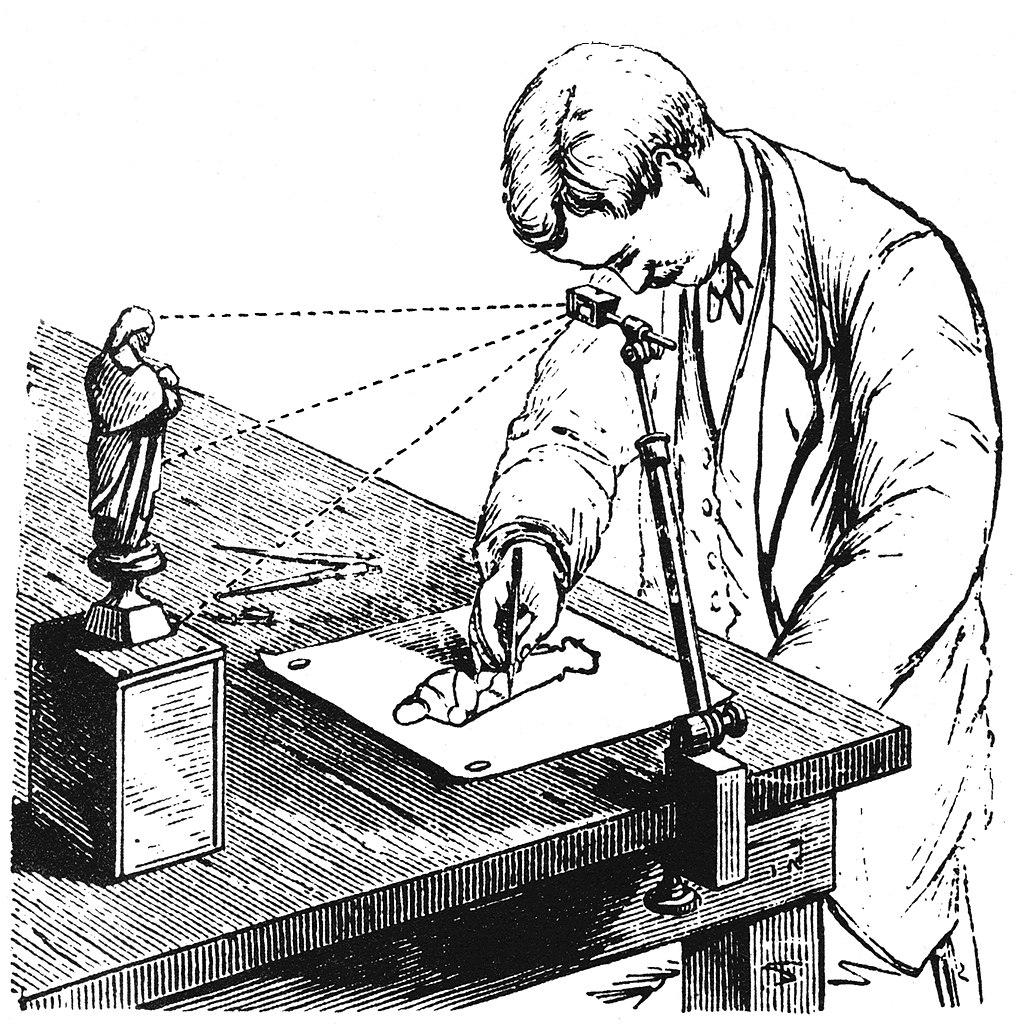
A Camera Lucida (Latin for light chamber) is a portable device that was developed after the Camera Obscura. The technology may have existed in the 17th century, but it wasn’t patented until 1806. A Camera Lucida creates an optical illusion, where the scene in front of the artist is superimposed onto paper, which is usually on a flat surface like a table. The artist is able to look down into the device, which uses glass, a one-way mirror, or a prism, and see both the image of the scene in front of them, and the drawing on the paper combined together. See Figure 2.8 which shows a diagram of how a Camera Lucida is used.
The artist can then trace the superimposed image (which is an illusion created by the device) and create an accurate representation of the scene with correct proportions and perspective on the paper below. It was much easier to use than the Camera Obscura because it didn’t require a darkened space, and you could use it anywhere in any light conditions. The technology of the Camera Lucida is similar to that used in microscopes that use mirrors to reflect the contents being viewed up into a lens that magnifies the image.
Artists used both of these technologies to assist in the depiction of realistic scenes in paintings and other art forms. Camera Lucida devices were also used by biologists and naturalists to create scientific illustrations.
Artist David Hockney wrote a controversial book where he claimed that many famous Old Master artworks were, in fact, created with optical devices like these. Some art historians were upset by this claim – they thought that Hockney was accusing the Old Masters of ‘cheating’ because of the suggestion that the artists hadn’t recreated the scenes in the paintings by eye alone. This implied that these Old Masters were less technically skilled than previously thought.
Along with physicist Charles M. Falco, Hockney claimed that many of the developments in realistic painting from the time of the early Renaissance (c.1430) were due to the technological development of optics devices. This is known as the Hockney-Falco Thesis. They didn’t consider using optical devices as ‘cheating’, rather they considered it part of the set of tools and devices artists could use in their work. Artists still require skill in painting techniques and visual style to create great masterpieces.
This video explores some of Hockney and Falco’s claims:
Kaleidoscope
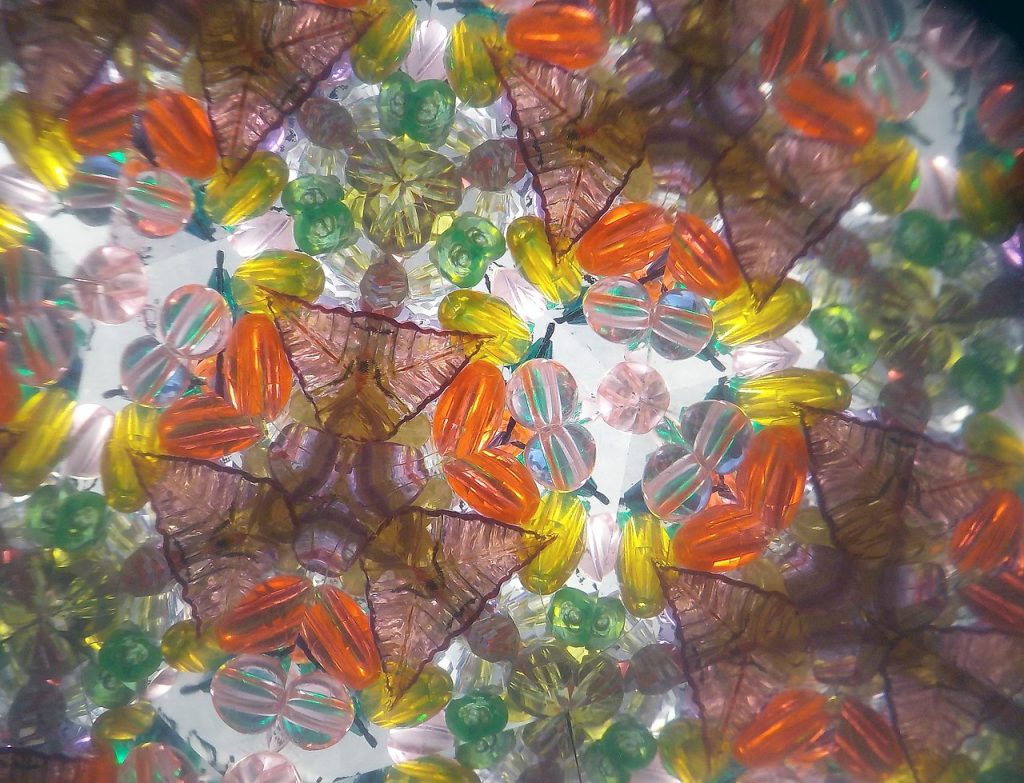
Figure 2.9. Example of the view looking through a kaleidoscope with coloured glass beads. Image attribution: Albarubescens, Rotational symmetries in designs produced by a kaleidoscopeDSCN2440, on Wikimedia Commons, CC BY-SA 4.0
How does it work?
Kaleidoscopes were first invented as toys in 1816 by Scottish physicist Sir David Brewster, but they can also be useful devices for designers and artists because they create complex and colourful symmetrical patterns. A kaleidoscope is usually made from a tube with angled mirrors inside of it that reflect light waves. Light usually travels in straight lines, but if it hits a shiny surface like a mirror, the light waves bounce back at a similar angle – like a bouncing ball.
Some kaleidoscopes have bits of coloured glass, beads or shiny objects inside them, so when you look into the tube, you see interesting geometric patterns made from these colourful objects and the reflected light from the mirrors (Figure 2.9). Other kaleidoscopes have lenses in them that bring light from outside objects into the kaleidoscope, and the patterns are made from the image you are viewing through the kaleidoscope tube.
If you rotate the kaleidoscope while looking through it, you can change the coloured pattern by shifting the coloured objects around or changing the light that the mirrors are reflecting.
You can now install mobile device apps that simulate a kaleidoscope effect using your camera or coloured geometric patterns, and you can save these images to use in creative projects. You can also get kaleidoscopic lenses that can be placed over a camera lens which add interesting patterns to a photographic image.
Learn more about kaleidoscopes from this text: The kaleidoscope, its history, theory and construction with its application to the fine and useful arts by Sir David Brewster, 1858 on the Internet Archive.
View Activities below to make your own Kaleidoscope.
3D glasses
Why do we have two eyes?
We have evolved to have two eyes (binocular vision), perhaps partly because there is less risk of total blindness if one eye is damaged. But have you ever thought about how we have two eyes but only see one image? The way our eyes work with our brains allows us to see in 3 dimensions (3D), and this is very useful for judging distances between objects and spatial navigation in the world.
More on human vision in 2.3 The human eye – how we see colour.
Stereoscopic photography
Binocular vision has also led to technological developments that try to replicate our 3D vision using different devices. The earliest experiments with this were with stereoscopic photography, where two photographic images were captured at a small distance from each other (similar to the distance between human eyes). These two photographs were placed in a viewer so that each eye views a different image (Figure 2.10). The brain interprets this information as a single image, and it appears that we are looking at a 3-dimensional scene.
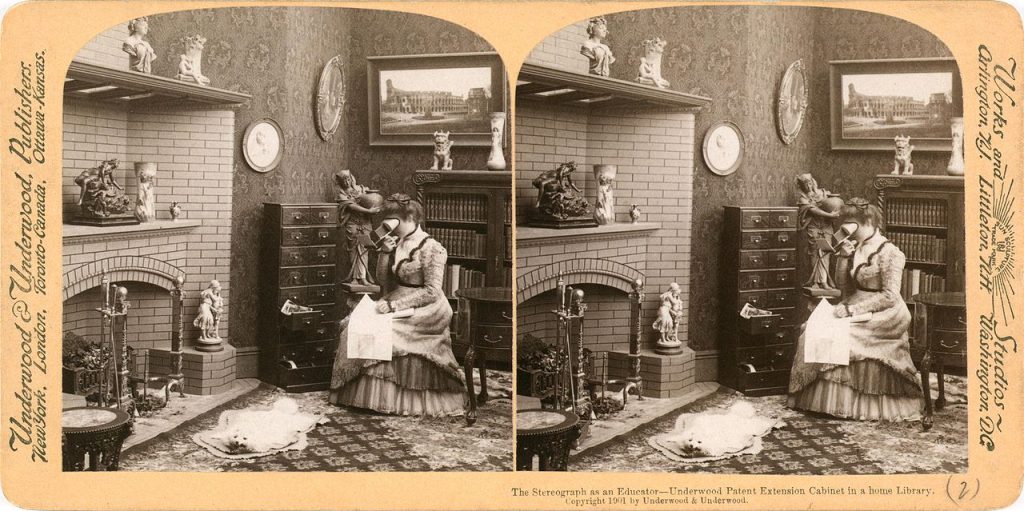
Anaglyph 3D – red/blue 3D glasses
A similar principle is used with the Anaglyph 3D technique, which overlays two images of different colours that are slightly apart. Usually, one image is red, and the other is cyan (Figure 2.11). To view this kind of image in 3 dimensions, you need special glasses with different coloured transparent filters for each eye.
The eye looking through the red filter only sees the cyan image (as a black image), and the eye looking through the cyan filter only sees the red image (as a black image). This is because these two colours are opposites and their light waves do not pass through the filter of the opposite colour.
The effect is the same as the stereoscope because the brain interprets these two images as one, which appears as a 3-dimensional scene.
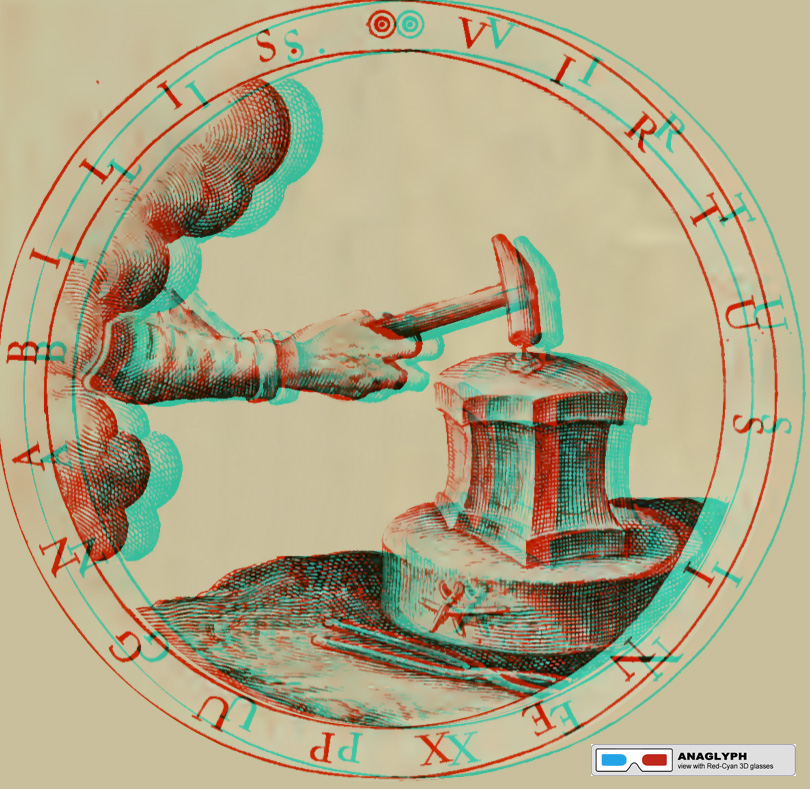
RealD 3D
RealD 3D cinema technology is a polarised 3D system that uses circularly polarised light to create stereoscopic image projection. The principle for the polarising glasses we wear now for viewing 3D cinema is the same principle as the original stereoscope – the film we are viewing is actually two sets of moving images projected with a special projector that alternates right-eye frames and left-eye frames, switching between them 144 times per second.
These separate projections for each eye are made with a special polarising screen that switches the polarisation, so each eye only sees the frames that match the polarisation of the glasses. This is what gives us a realistic 3D effect (Figure 2.12).
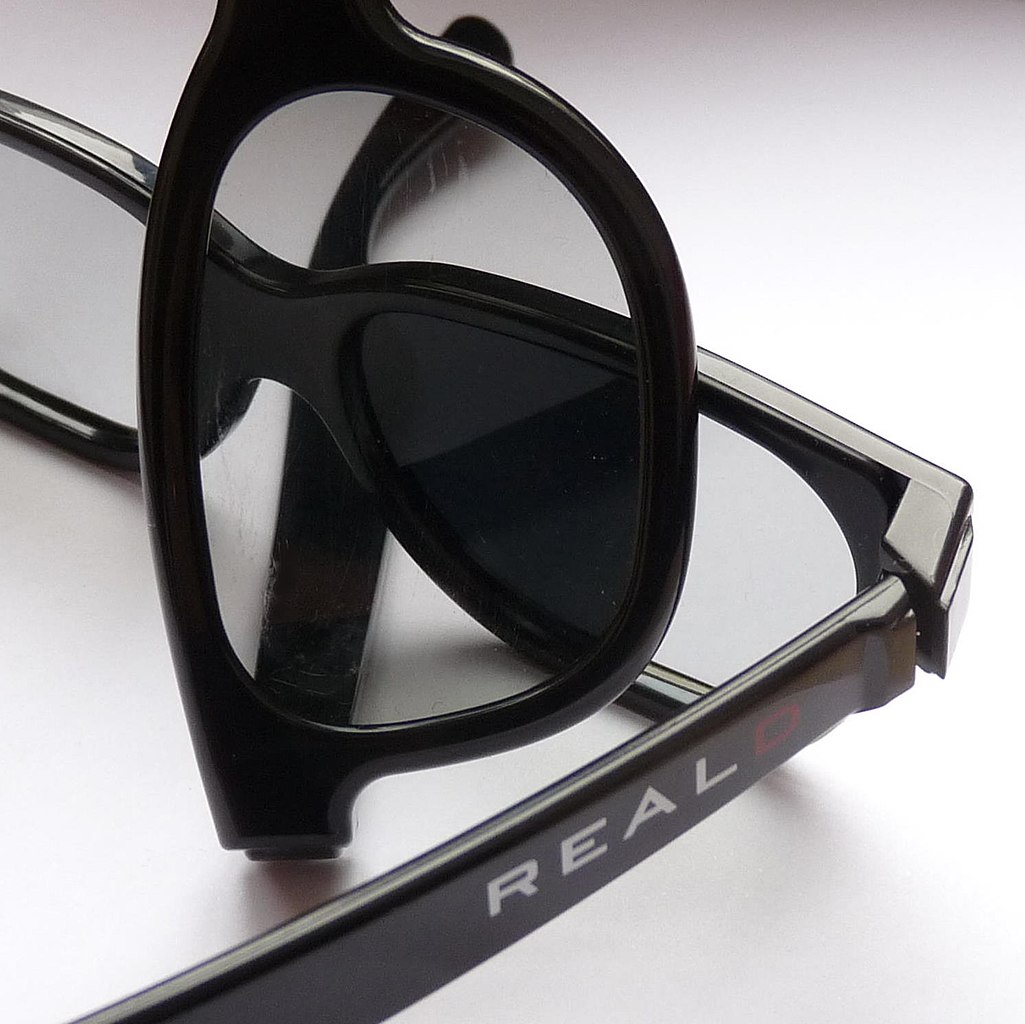
Pinhole camera – make your own Camera Obscura box
You can make one with any cardboard box:
or watch this video to learn how to turn your room into a Camera Obscura:
And this video will show you how kaleidoscopes are made – you can make your own using a cardboard roll, clear plastic and reflective cardboard instead of mirror glass.
Learn more here about the history of optics.
Visit Optics 2: electronic technologies and spectral analysis to see more examples of technologies that use optics such as lasers, optical fibre, photovoltaic cells, and spectral analysis in astronomy.
To superimpose is to place one thing over another, and allowing both to be visible. For example, to display or print an image or text over another image so that both are visible at once.

